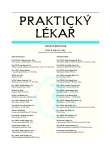The end of electromagnetic hypersensitivity
Authors:
L. Pekárek; L. Jelínek
Authors‘ workplace:
Státní zdravotní ústav, Praha
; Vedoucí: Ing. Lukáš Jelínek, Ph. D.
; Národní referenční laboratoř pro neionizující elektromagnetická pole a záření
Published in:
Prakt. Lék. 2009; 89(3): 128-130
Category:
Of different specialties
Overview
Stretching back almost thirty years, some people have been convinced that their health troubles (ranging from sleep disorders and headaches to serious health impairment leading to the inability to work) have arisen due to being exposed to an electromagnetic field emitted by nearby transmitters or household appliances. The intensity of these alleged fields has always appeared to be well below standard health and safety limits. In spite of the fact that many psychiatrists have suggested that the syndrome evidently has a psychogenic origin, it was only when functional magnetic resonance imaging (fMRI) became available that a direct and undeniable proof could be given, showing that electromagnetic fields have nothing to do with the reported health troubles. In the brain of a subjectively hypersensitive person, the fMRI device objectively recorded a stimulus any time that the person under investigation was told that the mobile phone transmitter at his or her head was switched on. Simultaneously, the person claimed he or she experienced an unpleasant feeling or pain. However, the mobile phone transmitter was never active during the experiment. The control persons, who did not consider themselves to be hypersensitive to electromagnetic fields, did not report any unpleasant feelings after having been told the mobile phone was on, and no stimulus in their brain was recorded at that time either.
Key words:
electromagnetic hypersensitivity (EHS), electrosensitivity, fMRI recorded EHS stimuli, nature of EHS , electromagnetic field exposure.
Sources
1. Bergqvist, U. Video display terminals and health. Scand. J. Work Environ. Health, 1984, 10, p. 1-87.
2. Göthe, C.L., Odont, C.M., Nilsson, C.G. The environmental somatisation syndrome. Psychosomatics, 1995, 36, p. 1-11.
3. Heřt, J., Krejčí, V. Elektromagnetická hypersenzitivita. Prakt. Lék., 2006, 86, s. 7-12.
4. Landgrebe, M., Barta, W., Rosengarth, K. et al. Neuronal correlates of symptom formation in functional somatic syndromes. A fMRI study. NeuroImage 2008, 41, p. 1336-1344. (Krátká zpráva o experimentu nazvaná „Mind Your Phone“ vyšla v The Economist, tištěné vydání, 25. září 2008, p. 10-14).
Labels
General practitioner for children and adolescents General practitioner for adultsArticle was published in
General Practitioner

2009 Issue 3
Most read in this issue
- Corticosteroids as a treatment of rheumatoid arthritis
- A new anti-obesity drug on the horizon?
- Addictive drugs in primary care
- Infections imported from exotic countries
